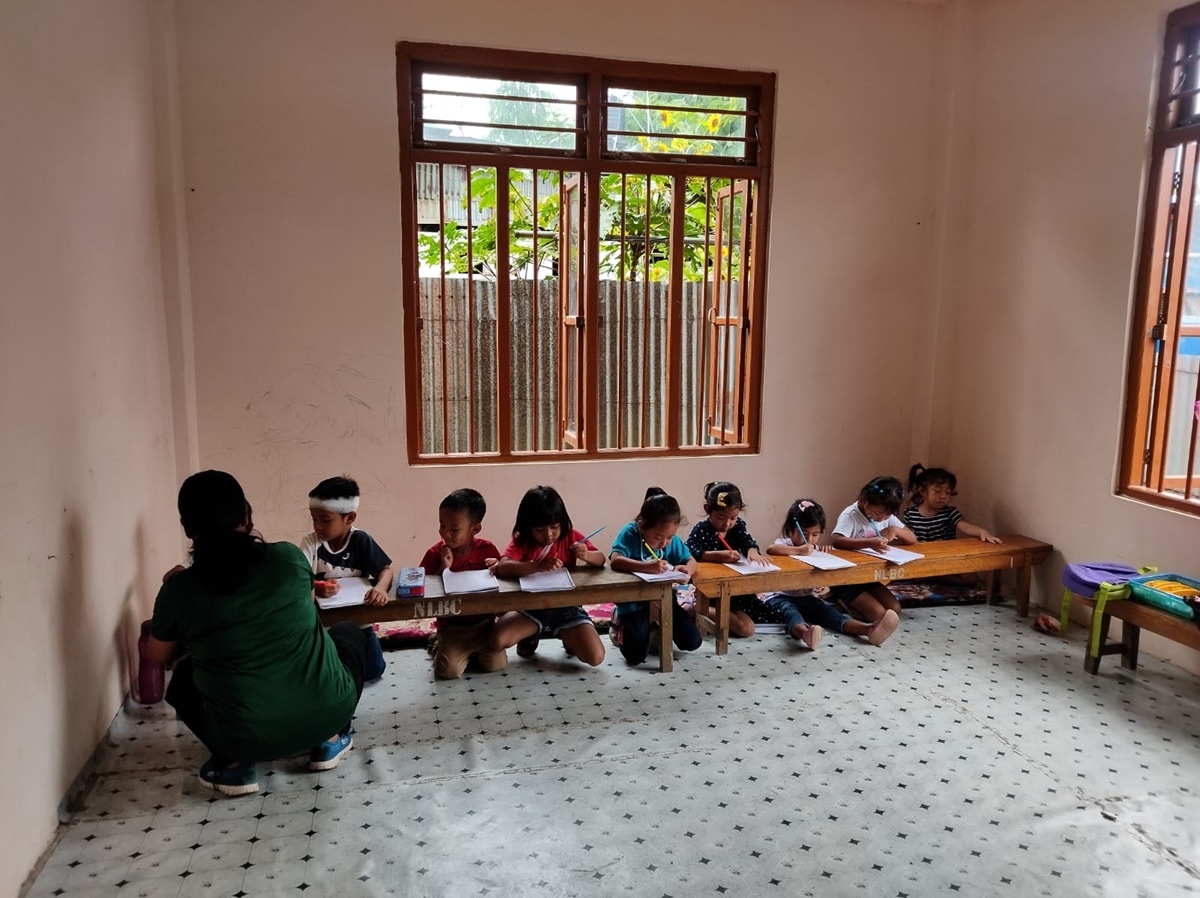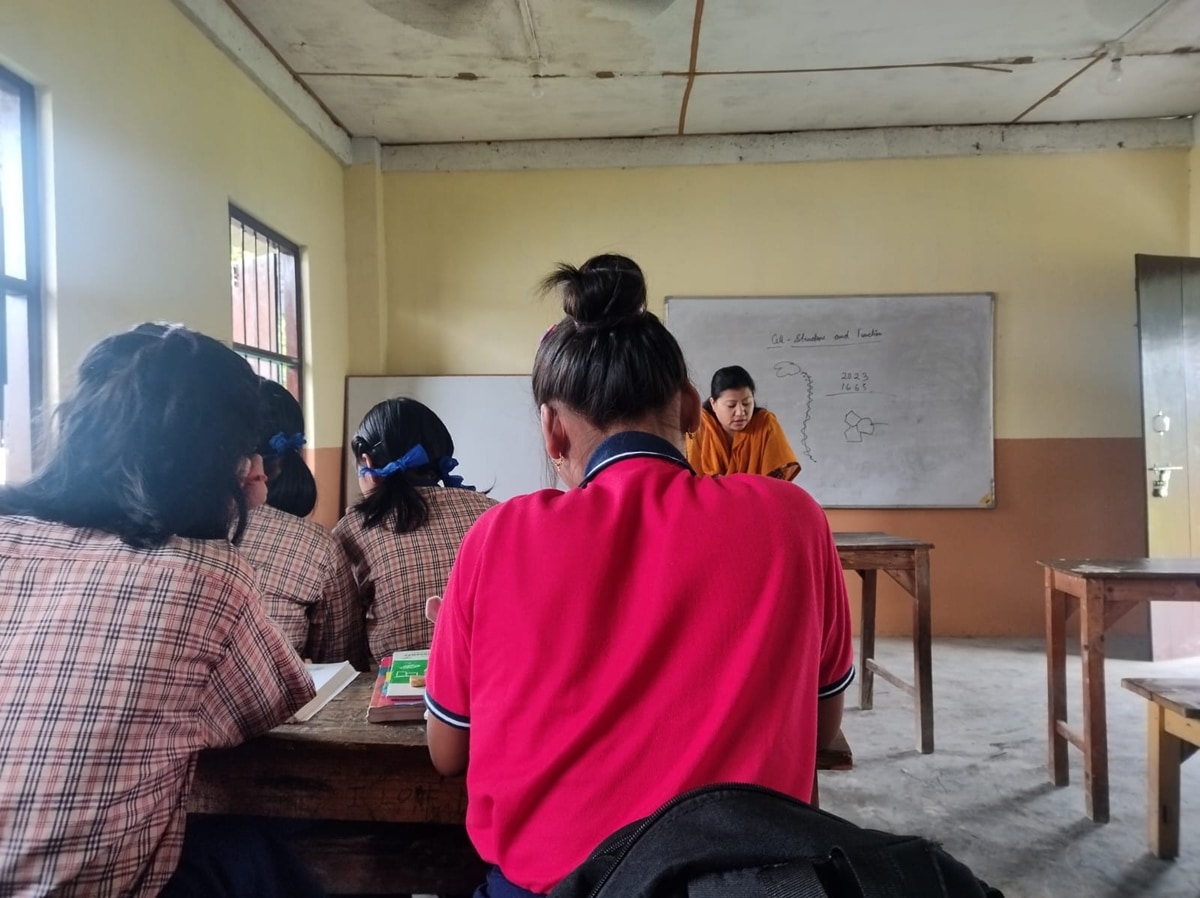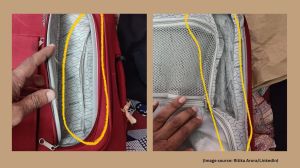Ground report: In Manipur schools, there are challenges beyond the syllabus
Three months since violence erupted and a month after schools reopened in Manipur, educators are grappling with how to address the academic – and emotional – needs of students.
 Over 120 of the 344 students at Uripok Tondonsana & Thanboumacha school are from a relief camp. (Express photo by Sukrita Baruah)
Over 120 of the 344 students at Uripok Tondonsana & Thanboumacha school are from a relief camp. (Express photo by Sukrita Baruah) Attendance was thin at Uripok Tondonsana & Thanboumacha High School in Imphal on Monday morning. At 11 am, teachers started making calls to parents to pick up their children after news spread that curfew will be imposed earlier than usual in light of the Meira Paibis holding a protest against the Assam Rifles.
Three months since ethnic clashes began in Manipur and a month after schools reopened, educators are grappling with how to address the academic – and emotional – needs of students.
According to government records, there were 15,207 displaced children in relief camps across the state as of Monday. Of these, 14,301 have been enrolled in schools nearby, but the process of teaching and learning has many challenges beyond mere enrollment.
Manipur School Education Director L Nandakumar Singh told The Indian Express that they have a “Plan A” and a “Plan B” with regard to the academic year as a whole. Plan A is to nix the winter holidays to address the loss of teaching and learning. “If we continue to not be able to open school regularly over the next few months, then we will contract the year’s syllabus by 30% and just focus on core concepts,” he said, elaborating on Plan B.
 Classes at the community learning Centre at Elim Veng in Churachandpur
Classes at the community learning Centre at Elim Veng in Churachandpur
While the energies of the education department are focused on enrolling displaced children to school and providing them with books and uniforms, teachers have the added task of addressing their trauma.
As many as 127 of the 344 students at Uripok school are from a nearby relief camp, which houses around a thousand displaced people. In class VIII, only 11 out of 37 students were present on Monday. Of these, seven are residents of the camp. Fourteen-year-old Malenganbi, whose family was displaced from Motbung village in Kangpokpi, is one of them.
Tugging at her phanek (traditional Meitei skirt) to adjust it, she said she is still getting used to this new school uniform. In her old school in Kangpokpi, both boys and girls wore track pants. Having grown up in a place where a majority of people were from the Kuki-Zomi community and having gone to school there, it is one of many adjustments she is trying to make.
 Boys from displaced families living in St. Paul’s Institute playing cards
Boys from displaced families living in St. Paul’s Institute playing cards
“Since we left, everybody has been talking only in Manipuri. I feel like I’ve started forgetting how to speak in English,” she said.
Both she and her friend Fidam (13), who was displaced from Churachandpur district, say they enjoy being back in school, but it’s nothing like home.
“I miss my home, my village, my friends, but my parents say that we can’t ever go back. I don’t even have their phone numbers,” said Fidam. “It takes me so long to fall sleep. I keep thinking that people will attack us in the night and kill us.”
There are 4,617 schools up to class 8 in Manipur – and in some, schooling is yet to begin. According to education department records, there were 96 schools which could not open alongside the others on July 5 for multiple reasons. While some were being used as relief camps or by central security forces, others were located in areas continuing to see heated conflict. Since then, 12 of these schools have started functioning. There are other factors at play too. In Churachandpur, many schools have not opened because of instructions not to do so by civil society organisations.
In St Paul’s Institute – one of the largest schools in the town – on Thursday morning, a group of boys sat playing carrom near the school gate. They were among the 170-odd displaced people living in the school. Classes have not begun there since the start of the violence, though school authorities say they are willing to resume classes in a staggered way with batches of students coming in turns every three days, since half the rooms are housing displaced people.
 Malenganbi, Fijam and their friend Babysana
Malenganbi, Fijam and their friend Babysana
Because of the violence, around 100 children have taken transfer certificates from the school, with their parents enrolling them in schools elsewhere such as Guwahati, Aizawl and Shillong, said school manager Khup Sukte.
Around 40 students of the school, from the Meitei community, are now in relief camps or relatives’ homes elsewhere.
As children come to terms with the fallout of the conflict, there are some trying to hold their hands through the process. In the local church compound in Elim Veng in Churachandpur, around 180 children from the locality – including a few from a nearby relief camp – have been attending community classes two hours a day, six days a week since July 12.
 Boys from displaced families living in St. Paul’s Institute playing cards
Boys from displaced families living in St. Paul’s Institute playing cards
“With schools closed and nothing else happening, we are afraid that children will be radicalised. Their time here is for them to socialise and heal their minds, and come closer to becoming students,” said Pausuanlal Guite, coordinator of the community learning centre.
Thirty people volunteering from the local community – teachers, college lecturers, concerned mothers – conduct classes in the church compound.
While children are learning from their school textbooks, there is also a special focus on “moral lessons”.
“Many of the students knew what was happening when the video of the sexual assault of the two women went viral. What we told them then is that these kinds of actions, even if done to who you oppose, are wrong. We should be different from that and all women should be respected. In the long run, things will change and we don’t want our children to be imprisoned in a mindset that everyone is an enemy,” said Guite.







